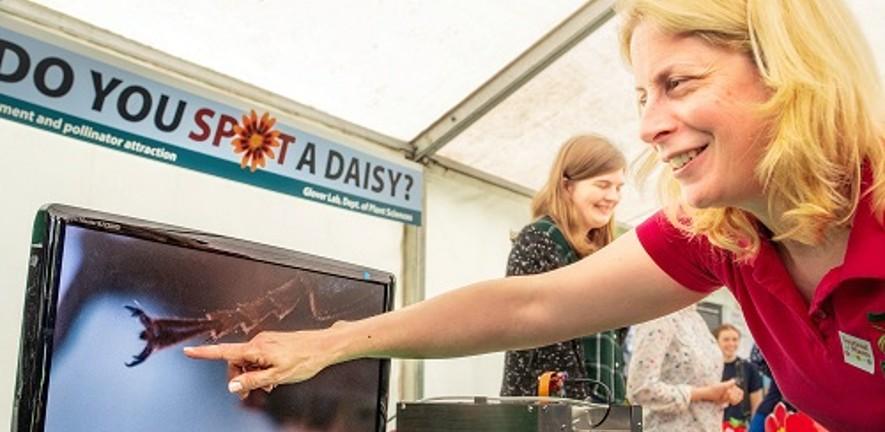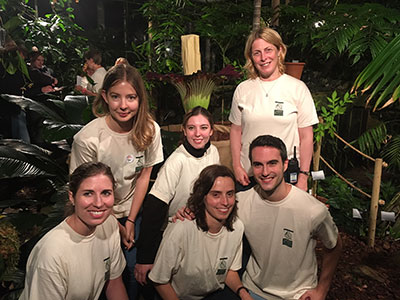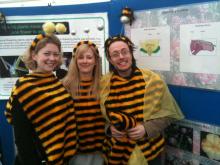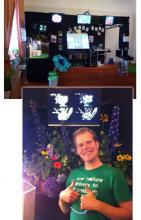
The group is involved in a number of projects that explain pollination and the relationships between plants and animals to a wider audience. We have been involved in the development of a computer game to design flowers for particular animal preferences, and Beverley gives talks on flower development and pollination to a variety of non-specialist audiences. We have also developed an exhibit to teach young children how pollination works. We have produced a giant flower, into which children, dressed as bees, are encouraged to crawl in a search for nectar (sweets). When they leave the flower they discover that they are covered with pollen (glitter). Please contact Beverley if you would like to discuss an outreach activity.
A not-so-fragrant flower: The Titan arum blooms

Members of the Glover Lab stayed up late in the Cambridge University Botanic Garden in June 2017, helping to entertain and educate the thousands of people who flocked to see the flowering of 'Titus', one of the two Amorphophallus titanum plants in the Garden's collection. Native to Indonesia, Titan Arum plants are categorized as a vulnerable species. They are also rare in that they are known to flower only every 7-10 years and when they do, the flower and its pungent smell only last for around two days as the stench it produces is the plant’s mechanism to allure carrion beetles who are known in the wild to pollinate it. The Garden's plant was hand pollinated by Glasshouse Supervisor Alex Summers, using pollen sent from the Eden Project and the Royal Botanic Garden Edinburgh.
How flowers use a touch of bling to woo the bees
Beverley Glover's group were part of an interdisciplinary team presenting a display at the Royal Society Summer Science Exhibition 5-10 July 2011. How Nature Dresses to Impress was presented by students and post-docs from the Evolution and Development group, along with colleagues from the groups of Professor Ulli Steiner and Professor Jeremy Baumberg, both in the Department of Physics and the Nanotechnology Centre. The display showed how nature uses structures to generate colour, particularly in plants but also in animals. The team used a live bumblebee display, a jungle exhibit, a nano-block colour game, giant bubbles and a range of butterflies and flowers to explain the principles behind structural colour.
Over six days, 12,000 visitors came to the Exhibition, and How Nature Dresses to Impress was very popular with members of the public and journalists. Parts of the exhibit will continue to be on display at the Cambridge Festival of Ideas, the Cambridge Science Festival, and the Botanic Garden's annual Festival of Plants.


